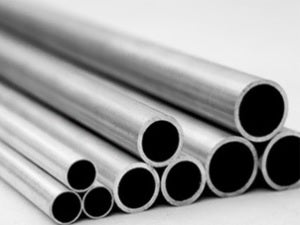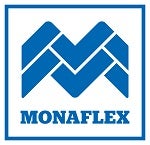
During section repairs, the Monaflex system, and those like it, use heat and pressure evenly applied on both the inside and the outside of the tyre to create a fast, effective and distortion-free repair. Click here to read more on this process.
There is a choice of options when it comes to filling the internal void of the tyre. Here we take a look at the good and the bad…
Cylinder Airbags
Cylinder Air Bags are specifically designed and manufactured for one and only one function: to provide consistent and uniform pressure to vulcanising components within the void of a tyre during the curing process of a section repair.
Monaflex Cylinder Air Bags are manufactured in accordance with the dimensions of individual tyre sizes to ensure that once positioned and inflated, they conform completely to the unique geometry of the tyre chamber and outward pressure is exerted uniformly in all directions.
When operating at the recommended 32psi, the pressure applied is 49,600lbs pm².
This equates to approximately 22 tons of pressure applied to every square meter of contact with the tyre.
Filler bags
These fabric bags provide a very flexible option. Once packed in the tyre they provide a solid surface for a flat airbag to push against. The loose filling allows them to accurately conform to the tyre section.
Filler bags will not collapse or move and provide great insulation so there is no risk of temperature deviations or cold spots.
This option is especially useful for smaller tyres, as filling the tyre void with them becomes more time consuming for larger sections.
This option also provides flexibility for workshops dealing with unusual section profiles (for example in Agriculture) or a really diverse mix of tyres.
Aluminium tubing
Aluminium tubing is durable, corrosion-resistant and lightweight – it is suitable for many applications but less so for use in tyre section repairs.
Aerospace, automobile, and rail transportation manufacturers make use of aluminium tubing in fuselage, hydraulic systems, and fuel lines, and its heat-conductive capabilities render it a good alternative to steel or other heavier metals in refrigerators, engines, and HVAC systems.
However, the same properties that make it suitable in such widespread applications can cause problems in a tyre void.
Heat is dissipated quickly, the tubes may shift as pressure is applied causing inconsistencies within the repair. Crucially we also see the edges of the tube fillers causing damage to the other curing components, which results in a significantly shorter life span.
Polyethylene Pipes
Ultra-High Molecular Weight Polyethylene pipes are used in a variety of industries and have a specific use in mining and dredging applications.
Polyethylene piping is recognised as the predominant material for many mining processes, such as the transportation of water, process water, slurry and tailings; mine dewatering and aquifer depressurisation; and, direct applications such as solution mining and heap leaching.
Due to their wide use on mine sites, these pipes are readily and easily available to many on-site workshops in particular.
They are lightweight and easy to handle yet can create serious problems when caused in section repair. As with aluminium pipes they can shift and damage components introducing a risk of substandard repair quality and shortened component lifespan. Add to this their brittle nature and the risk of cracking and catastrophic repair failure increase.
CCA Pine Logs
CCA Pine logs are ideal for all rural and semi-rural fencing applications as well as vineyard posts and they can easily be used in conjunction with a range of other fencing materials including electric wire, mesh and ring lock.
Copper chrome arsenate (CCA) treated timber is wood that has been treated with a preservative containing copper, chromium and arsenic. CCA treatment prolongs the life of the wood making them impervious to termites, rot, mould or fungi.
Although the chemicals are fixed within the dry wood in CCA-treated timber, concerns have been expressed internationally about the potential for harm as small amounts of arsenic can leach out of the surface of the timber.
Many bodies recommend limiting possible exposure to the chemicals in CCA-treated timber as a precaution due to the potential for harm as small amounts of arsenic could theoretically leach out of the surface of the timber.
Any logs will be heavy to work with and prone to problems when used in tyre repair. As a void filler, logs can shift, crack and compress – there is no certainty that the cure will be effective. Few operations would consider this option now.
In summary – your options for section repair void fillers:
| Option | Availability | Cost | Installation time | Consistency of pressure | Effect on components | Storage | OH&S | Repair Quality | Effect on Warranty |
|---|---|---|---|---|---|---|---|---|---|
| Cylinder Airbags | Yes | 100 | 5-10 minutes | 100% | Nil | Shelf | Nil | Optimum | Nil |
| Filler Bags | Yes | 75 | 10-20 minutes | 95% | Nil | Shelf | Repetitive lifting | Near optimum | Nil |
| Aluminium Pipes | Yes | 75 | 10-20 minutes | 75% | Likely | Racks | Repetitive lifting | Reduced | Void |
| Polyethylene Pipes | Yes | 50 | 10-20 minutes | 75% | Likely | Racks | Repetitive lifting | Reduced | Void |
| CAB logs | Yes | 20 | 10-20 minutes | 75% | Likely | Racks | Repetitive lifting & CCA exposure | Reduced | Void |

